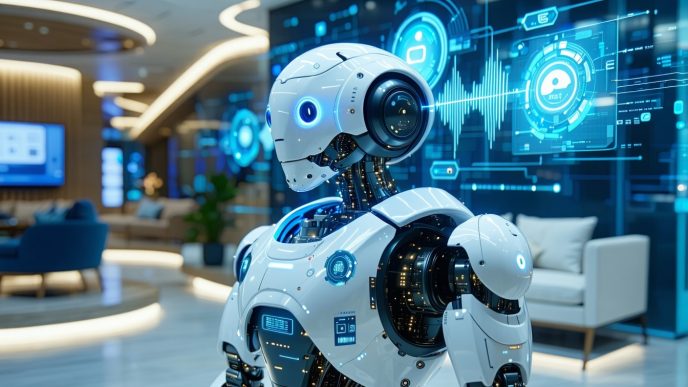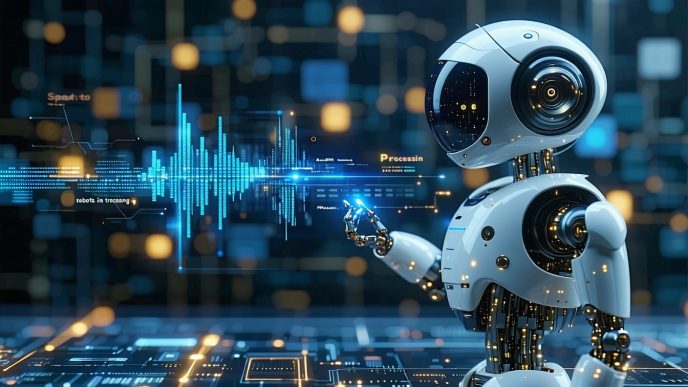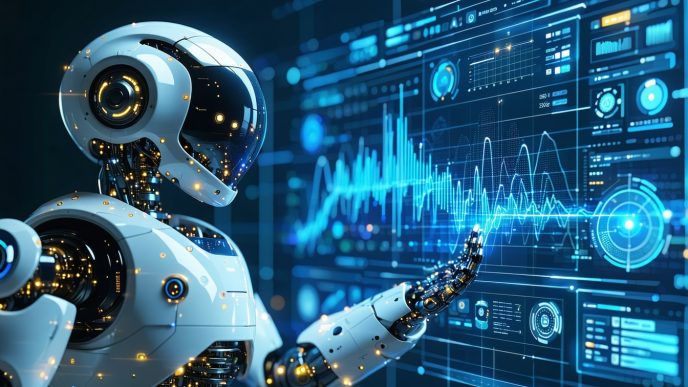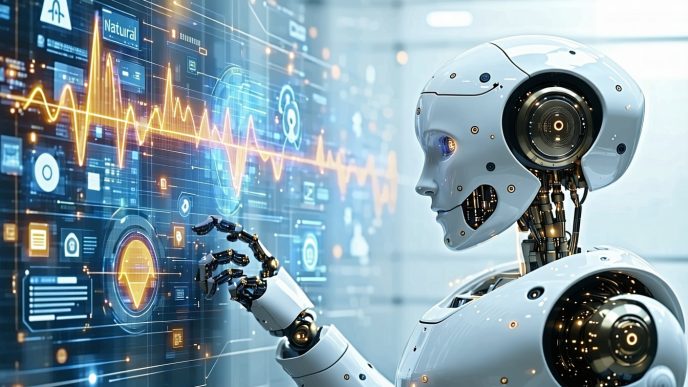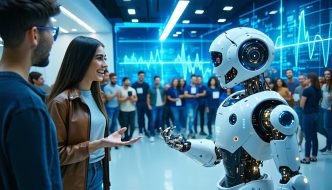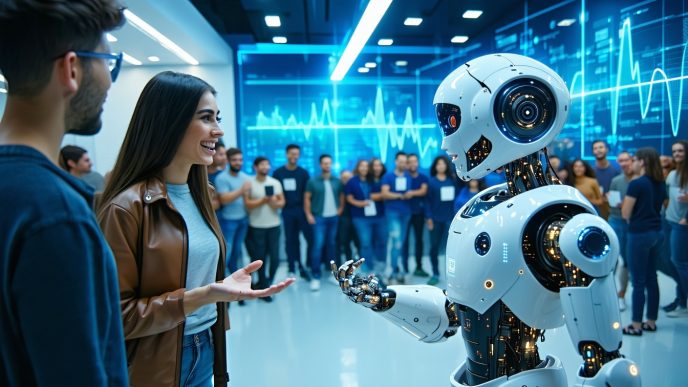Evolution of Voice Interaction
Voice interaction has significantly evolved over the years, paving the way for robots to communicate more effectively with humans. This section explores the history of voice assistants and the advancements in natural language processing that have contributed to their conversation capabilities in robots.
A Brief History of Voice Assistants
Voice assistants have come a long way since their inception. Early systems were primarily designed for command recognition and could only handle simple voice inputs. With limited vocabulary and processing power, these devices struggled to understand user intent, often producing frustrating interactions.
The introduction of more sophisticated technologies began to change this landscape. The 2010s saw the launch of advanced voice assistants, which leveraged improved algorithms and better hardware to enhance user experience. These developments allowed systems to recognize speech more accurately and respond to a wider range of commands.
| Year | Milestone |
|---|---|
| 1960s | Initial experiments in speech recognition begin. |
| 2011 | Introduction of Siri marks a significant leap in voice assistant capabilities. |
| 2014 | Alexa is launched, further pushing the boundaries of voice interaction. |
| 2020s | Continued integration of AI and machine learning in voice technology. |
The Shift to Natural Language Processing
The shift to natural language processing (NLP) has been pivotal in enhancing the conversation capabilities in robots. NLP allows machines to understand, interpret, and generate human language in a way that feels more intuitive to users. This transformation has shifted focus from mere command recognition to a more holistic understanding of context and intent.
Sophisticated algorithms can now analyze spoken language, taking into account subtleties like grammar, punctuation, and even slang. This has enabled voice assistants to hold more natural conversations and address user queries with greater relevance and accuracy. As a result, users experience interactions that mirror more closely those they would have with human beings.
To comprehend the impact of NLP on conversation capabilities, it’s essential to understand its core components. These include:
| Component | Description |
|---|---|
| Speech Recognition | Converts spoken language into text for processing. For more details, see speech to text processing in robots. |
| Natural Language Understanding | Interprets the meaning behind the words spoken. For further insights, refer to our article on natural language understanding in robots. |
| Natural Language Generation | Converts processed data back into human-like responses. |
These advancements have laid the groundwork for innovations in robots designed to engage in natural conversation. The continuous refinement in NLP technology contributes to more seamless and personalized interactions in various applications.
For further exploration into how robots are improving their voice recognition capabilities, check out robot voice recognition and nlp.
Understanding Conversation Capabilities
As technology progresses, the ability of robots to understand and engage in conversations has greatly improved. This section will explore how robots interpret voice commands, respond to questions, and emulate human-like interactions.
How Robots Interpret Voice Commands
Robots utilize advanced voice recognition systems to interpret commands. These systems analyze the audio input, converting spoken language into digital data that can be processed. The process involves:
- Audio Input: Sound waves are captured using microphones.
- Speech Recognition: Algorithms convert audio signals into text through phonetic analysis.
- Natural Language Understanding: The robot interprets the structure and meaning of the text input.
The accuracy of voice command interpretation is essential for effective communication. Recent studies indicate that voice command accuracy has improved significantly, as shown in the table below.
| Year | Accuracy Rate (%) |
|---|---|
| 2015 | 70 |
| 2018 | 85 |
| 2021 | 95 |
For a deeper understanding of how this technology works, refer to our article on robot voice recognition and nlp.
Responding to Questions Naturally
Once a robot interprets a command, responding appropriately is crucial. Robots use natural language understanding (NLU) to formulate responses that are coherent and contextually relevant. The response generation process typically includes:
- Contextual Analysis: Recognizing the context of the question.
- Response Generation: Constructing a reply that fits the inquiry.
- Speech Output: Converting the text response back into speech.
The ability to answer questions naturally relies on sophisticated algorithms and vast databases of conversational data. To explore more about the implications of this technology, visit our article on natural language understanding in robots.
Emulating Human-Like Interactions
Robots are increasingly designed to emulate human interactions. This involves presenting responses with personality and emotional intelligence, which can make communication feel more genuine. Key aspects include:
- Tone and Inflection: Robots can adjust their tone and speech patterns to match human conversational nuances.
- Adaptive Responses: They may shift their responses based on the user’s emotional cues or the context of a conversation.
- Engaging Dialogue: Robots can hold a multi-turn conversation, allowing for back-and-forth dialogue.
Studies show that users exhibit greater satisfaction when robots can effectively mimic human interactions. The importance of emotional connection through design can be further explored in our article on robot responses and personality design.
By understanding these conversation capabilities in robots, users can better appreciate how advanced technology is shaping future interactions whether at home, in customer service, or educational settings. For insights into the future of these advancements, check our article on future of voice interaction with robots.
Technologies Behind Natural Conversations
The capability of robots to engage in conversation hinges on several advanced technologies. Understanding these technologies can provide insights into the conversation capabilities in robots and how they interact with users.
Speech Recognition Systems
Speech recognition systems are fundamental for robots to interpret spoken language. These systems convert audio input into text, allowing robots to process voice commands effectively. The accuracy of these systems is crucial, as they must minimize errors to ensure correct interpretations.
| Feature | Description |
|---|---|
| Accuracy Rate | Typically ranges from 85% to 97% depending on the environment and training data. |
| Processing Time | Generally less than 0.5 seconds for real-time recognition. |
| Supported Languages | Modern systems can support dozens of languages, including regional dialects. |
For further information on how these systems work, refer to our article on robot voice recognition and NLP.
Natural Language Understanding
Once a robot has converted speech into text, it relies on Natural Language Understanding (NLU) to interpret the meaning behind the words. NLU enables robots to grasp the context and intent, allowing for more natural responses. This technology takes into account various factors such as syntax, semantics, and even user intent.
| Component | Function |
|---|---|
| Intent Recognition | Identifies the user’s goal or request. |
| Entity Recognition | Detects specific data points within the text, such as dates and names. |
| Context Management | Maintains the context of the conversation for coherent dialogue flow. |
To dive deeper into how robots achieve this, check out our article on natural language understanding in robots.
Machine Learning and AI Integration
Machine learning algorithms enhance a robot’s conversational capabilities by allowing it to learn from interactions. Through AI integration, robots become better at understanding diverse accents, adapting to users’ preferences, and improving their response accuracy over time. This learning process involves large datasets and continuous training to refine performance.
| Machine Learning Feature | Benefit |
|---|---|
| Data-Driven Learning | Uses large volumes of conversation data to improve accuracy. |
| Adaptability | Can adjust to various speaking styles and preferences. |
| Personality Design | Allows for the creation of responses that feel more human-like. |
For more on how these technologies shape the evolution of robots, explore our article on future of voice interaction with robots.
Together, these technologies form the backbone of conversation capabilities in robots, making their interactions with users more seamless and human-like.
Challenges and Limitations
While robots and voice assistants have made significant strides in conversation capabilities, they still face several challenges and limitations in fully understanding and engaging in natural dialogues.
Contextual Understanding
Context is crucial for effective communication. Robots often struggle to grasp the nuances of context, which can lead to misunderstandings. For instance, when someone asks, “Can you get that?” a robot may not understand the specific object being referenced if it lacks contextual awareness.
The challenge lies in maintaining a memory of prior interactions and the surrounding environment, which are essential for drawing accurate conclusions based on past exchanges. This limitation can diminish the user experience as users frequently need to clarify their requests.
| Contextual Understanding Challenges | Description |
|---|---|
| Ambiguity in Commands | Commands with multiple interpretations may confuse robots. |
| Situational Awareness | Robots may lack the ability to recognize current events or scenarios. |
| Memory Retention | Robots often do not retain information from previous interactions. |
Emotional Intelligence
Emotional intelligence refers to the ability to understand and respond to human emotions effectively. While some robots can recognize basic emotions through voice tone or facial expressions, their responses are often simplistic and lack true emotional depth. This limitation poses a barrier in creating genuine connections with users.
Robots may mimic empathetic responses, but without true understanding, interactions can come across as robotic or insincere. This challenge is critical when robots are deployed in roles like caregiving or customer service, where emotional nuances play a significant role.
| Emotional Intelligence Aspects | Challenges |
|---|---|
| Emotion Recognition | Robots can identify basic emotions but struggle with complexity. |
| Appropriate Responses | Responses often lack nuance and may be perceived as inadequate. |
| Building Rapport | Genuine relationship-building remains challenging for robots. |
Privacy and Security Concerns
Another significant concern regarding robots equipped with conversation capabilities involves privacy and security. As these machines collect data to improve their performance and understanding, they also raise critical issues regarding how this data is stored, processed, and used.
Users often worry about the potential for misuse of their personal information, especially if the interactions involve sensitive topics. Ensuring robust security measures and transparent data policies is essential for fostering trust between users and robotic technologies.
| Privacy and Security Issues | Description |
|---|---|
| Data Collection | Robots may gather sensitive personal data during interactions. |
| Data Storage | Concerns regarding where and how data is stored persist. |
| User Trust | Lack of transparency may lead to diminished user confidence. |
Addressing these challenges is vital for advancing conversation capabilities in robots. Understanding these limitations allows developers and users to engage with technology more effectively while recognizing what to expect from interactive robotic systems. For further insights, explore topics such as robot voice recognition and NLP and natural language understanding in robots.
Real-Life Applications
Robots equipped with advanced conversation capabilities have found a variety of real-life applications. Their ability to understand and process voice commands opens up new avenues for convenience and efficiency in daily tasks. This section highlights three significant areas where voice-interacting robots are making an impact: household assistants, customer service robots, and educational robots.
Household Assistants
Household assistants have become increasingly popular as smart technology integrates into daily living. These robots help manage home tasks such as setting reminders, controlling smart devices, and providing updates on weather or news. They rely on voice recognition and natural language understanding to respond to user requests effectively.
| Feature | Functionality |
|---|---|
| Voice Command Activation | Responds to specific wake words for interaction |
| Smart Home Integration | Controls lights, thermostats, and appliances |
| Reminder and Scheduling | Sets alarms and schedules events |
| Information Retrieval | Answers questions and provides updates |
For more insights on how these systems recognize voice commands, refer to our article on robot voice recognition and nlp.
Customer Service Robots
Customer service robots are transforming the retail and service industries by enhancing the customer experience. They can handle inquiries, assist with transactions, and provide information without human intervention. With their conversation capabilities, these robots aim to deliver prompt and accurate responses.
| Application | Features |
|---|---|
| Help Desks | Answers frequently asked questions |
| Order Management | Assists customers in placing and tracking orders |
| Feedback Collection | Gathers customer feedback to improve services |
| Multilingual Support | Communicates in multiple languages |
Their effectiveness can be further explored in our article on voice command accuracy in robots.
Educational Robots
Educational robots equipped with conversation capabilities are becoming valuable tools in classrooms and learning environments. They assist students with learning materials, offer personalized tutoring, and encourage interactive learning experiences.
| Educational Feature | Benefit |
|---|---|
| Interactive Lessons | Engages students through conversational learning |
| Progress Tracking | Monitors student progress and provides feedback |
| Language Learning | Assists in language acquisition with practice |
| Support for Special Needs | Customizes responses to cater to diverse learners |
For further details on how robots utilize natural language processing in education, check our article on natural language understanding in robots.
These real-life applications demonstrate how effectively robots utilize their conversation capabilities, providing valuable assistance in various aspects of life. As technology advances, the integration of voice interaction in robots continues to enhance overall user experience.
Future Prospects
Advancements in AI
The future of conversation capabilities in robots is closely tied to advancements in artificial intelligence (AI). Continuous improvements in AI algorithms enable robots to process and understand human speech more accurately. These enhancements include refining speech recognition systems, which are essential for interpreting voice commands effectively.
Recent developments in machine learning and natural language processing promise to elevate conversational interactions to new heights. For instance, AI can learn from user interactions, adjusting its responses based on past conversations, thereby creating a more personalized experience. A table summarizing AI technology advancements is as follows:
| Technology | Current Capability | Future Prospect |
|---|---|---|
| Speech Recognition | Basic understanding of commands | Enhanced accent recognition and context-aware processing |
| Natural Language Understanding | Simple responses based on keywords | Complex dialogue management and emotional tone recognition |
| Machine Learning | Pattern recognition | Adaptive learning for personal preferences |
These advancements make robots more equipped to engage in meaningful conversations, highlighting a significant evolution in their interaction dynamics.
Integrating Emotions into Conversations
An exciting area of development lies in the integration of emotional intelligence into robot interactions. Emotion detection technologies enable robots to recognize and respond to human feelings, allowing for a more natural conversational flow. By interpreting vocal tones and facial expressions, robots can adjust their responses to align with the emotional context of the interaction.
For example, a robot may recognize frustration in a user’s voice and choose to respond with reassurance or empathy rather than a standard reply. As emotional intelligence in robots progresses, the potential for enriching human-robot interactions increases. Understanding these emotions can lead to improved robot responses and personality design.
Ethical Considerations in Human-Robot Interactions
As robots become more integrated into everyday life, ethical considerations surrounding their conversational capabilities must be addressed. Topics such as privacy, consent, and the extent of human-like behavior must be thoughtfully examined. There is a concern regarding how much personal data robots can collect during interactions and how this data will be used.
Moreover, the emotional responses integrated into robots raise questions about the ethical implications of creating machines that can mimic human feelings. Striking a balance between advanced conversation abilities and ethical constraints will be crucial as the technology evolves. For further insight, consider exploring the concepts around robot voice interfaces vs apps and the future landscape of AI developments in voice interaction with robots.
The trajectory of conversation capabilities in robots will continue to evolve, highlighting the importance of responsible innovation as these technologies develop.





